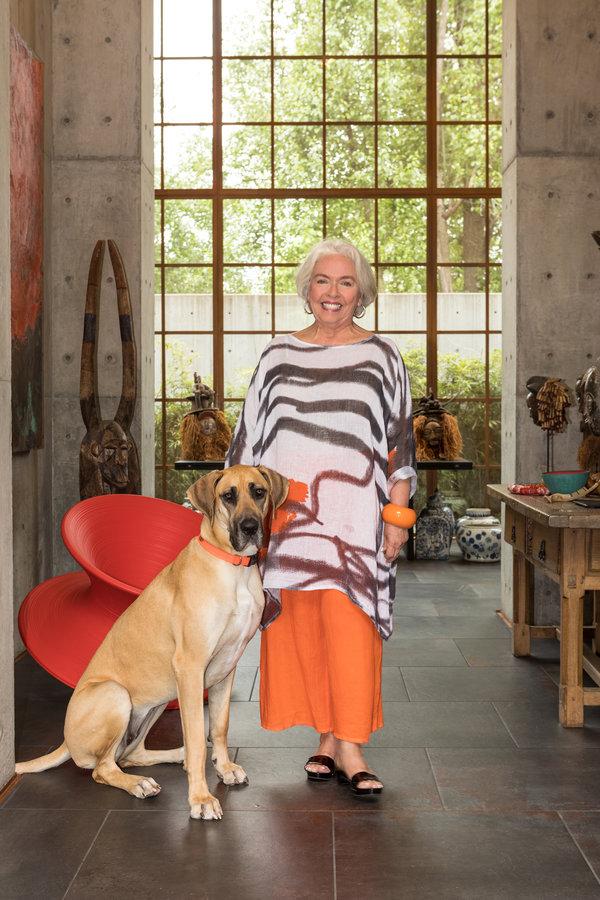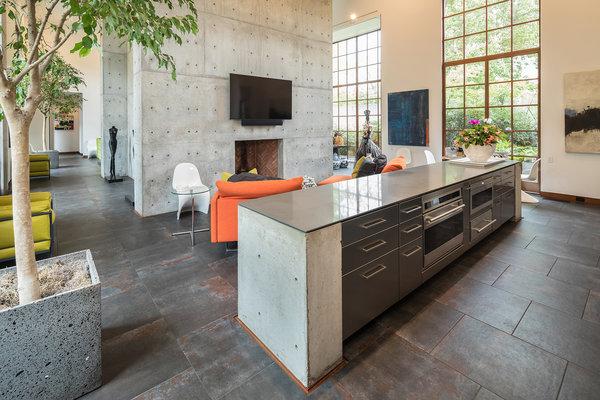In the early 1980s, Evelyn Hatfield and her husband, Charles Hatfield, built a big, traditional house surrounded by lush gardens behind a country club on the southern edge of Tulsa, Okla.
“I loved that house,” said Ms. Hatfield, now 72.
But after Charles died in 2007, she decided it was time to relocate. “I just couldn’t stay in that big house,” she said. The couple’s son had also grown up and moved out. “I used such a small part of it.”
Looking to downsize, she began touring homes in the area with her friend and real estate agent Peter Walter, but was less than excited by what she saw. “Everything he showed me was sort of like what I had, but smaller,” she said. None of the homes seemed special.
What she really wanted, she realized, was something completely different: a striking, modernist house.
There was no home like that on the market, but Mr. Walter took her to see a house designed by Pat Fox, the founding principal of Fox Architects, who creates pared-down structures based on simple geometric forms.

Evelyn Hatfield hired Fox Architects to design a modernist house where she could display her eclectic art collection. (Ruby Maxine, her Great Dane, is comfortable there, too.)CreditScott Keith Miller for The New York Times
“I thought it was great,” Ms. Hatfield said. But it wasn’t for sale.
She asked Mr. Fox to show her a few other homes he had built. Inspired, she soon commissioned him to design one for her, then turned her attention to finding a vacant lot to put it on.
After years of living in the suburbs, she set her sights on the center of Tulsa and bought a small corner lot for about $300,000 in the Midtown neighborhood, a short walk from the Philbrook Museum of Art.
In response to Ms. Hatfield’s request for a single-story, low-maintenance house with a pool, Mr. Fox conceived a symmetrical structure of about 4,300 square feet, with five connected pavilions: a soaring central volume with 20-foot ceilings and 16-foot-tall windows for the primary living spaces; two smaller boxes on one side for the master bedroom and bathroom; and two identical boxes on the other side with more bedrooms.
Much of the yard is enclosed by a concrete wall, which mutes traffic noise from the busy avenue that borders the property and sets up an entrance sequence that leads visitors through a pair of gates, across a limestone-slab bridge that bisects a long, narrow swimming pool (which also functions as a reflecting pool), to steel-and-glass front doors.

The kitchen is as much a media room and entertaining space as it is a place for cooking.CreditScott Keith Miller for The New York Times
“It’s a very formal progression,” said Mr. Fox, who also served as the general contractor. “It’s very Palladian in the way the house is set up,” he added, referring to symmetry and play on proportions employed by the 16th-century architect Andrea Palladio.
But the neo-Classical references end there. The home’s materials and finishing touches are decidedly contemporary, with exposed concrete walls inside and out, and slate-shingle siding that Mr. Fox envisioned as a twist on the cedar-shingle siding found in the Northeast. Small, private courtyards behind the dining room and master bathroom are encircled by bamboo.
Inside, the kitchen almost disappears when not in use thanks to concealed appliances, a secondary prep kitchen and an expandable dining table that Ms. Hatfield often uses as a library table.
After the house was completed in 2011, for a cost of about $3 million, she filled it with an eclectic mix of furniture and objects: African masks her parents collected, blue-and-white Chinese and Korean ceramics, and an English pine cabinet with glass doors all live alongside modern, high-backed Alcove sofas and curvaceous plastic Panton chairs from Vitra.
Aware that Ms. Hatfield had an extensive art collection that was as varied as her furniture, Mr. Fox created plenty of display space. Only later did he discover that one of the pieces she owned was a painting by his daughter, Sarah Fox, bought from M.A. Doran Gallery in Tulsa before Ms. Hatfield and Mr. Fox met. It now hangs near the entrance.
When it comes to decorating and collecting art, Ms. Hatfield said, she follows her instincts: “I just buy things that I like, and that make me happy.”
One of her most playful acquisitions is a red Spun chair by Thomas Heatherwick for Magis, which has a semi-pointed base that allows it to rotate 360 degrees, like a spinning top.
“I had gone to Dallas, to the Nasher,” she said, referring to the Nasher Sculpture Center. “And there must have been 30 of those chairs, with old people and children twirling around, and I thought it was fabulous.”
So she ordered one from the gift shop, and now “everyone who comes here has to take a turn on that chair,” she said.
As for the house, it is vastly different from her previous home — and the neighbors’ houses, for that matter — but that suits her just fine.
“I have a lot of concrete walls, and the pool on the front, which is not something you see a lot here in Tulsa,” she said. “But I liked all those things. So here I am.”
For weekly email updates on residential real estate news, sign up here. Follow us on Twitter: @nytrealestate.







